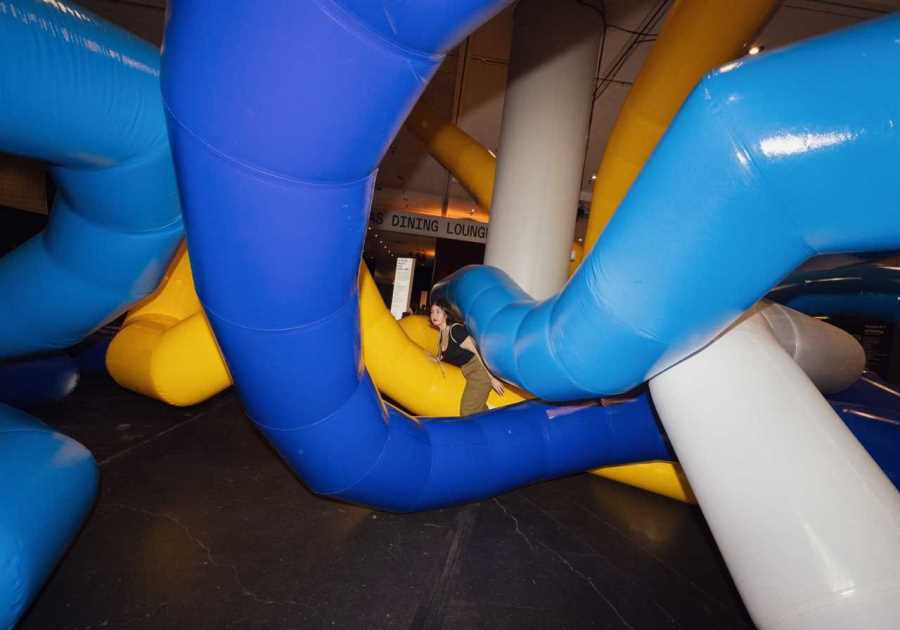Archetypes of 1970s utopian living, these self-determining homes in the desert have been embraced by a younger cohort eager to create a more sustainable future.
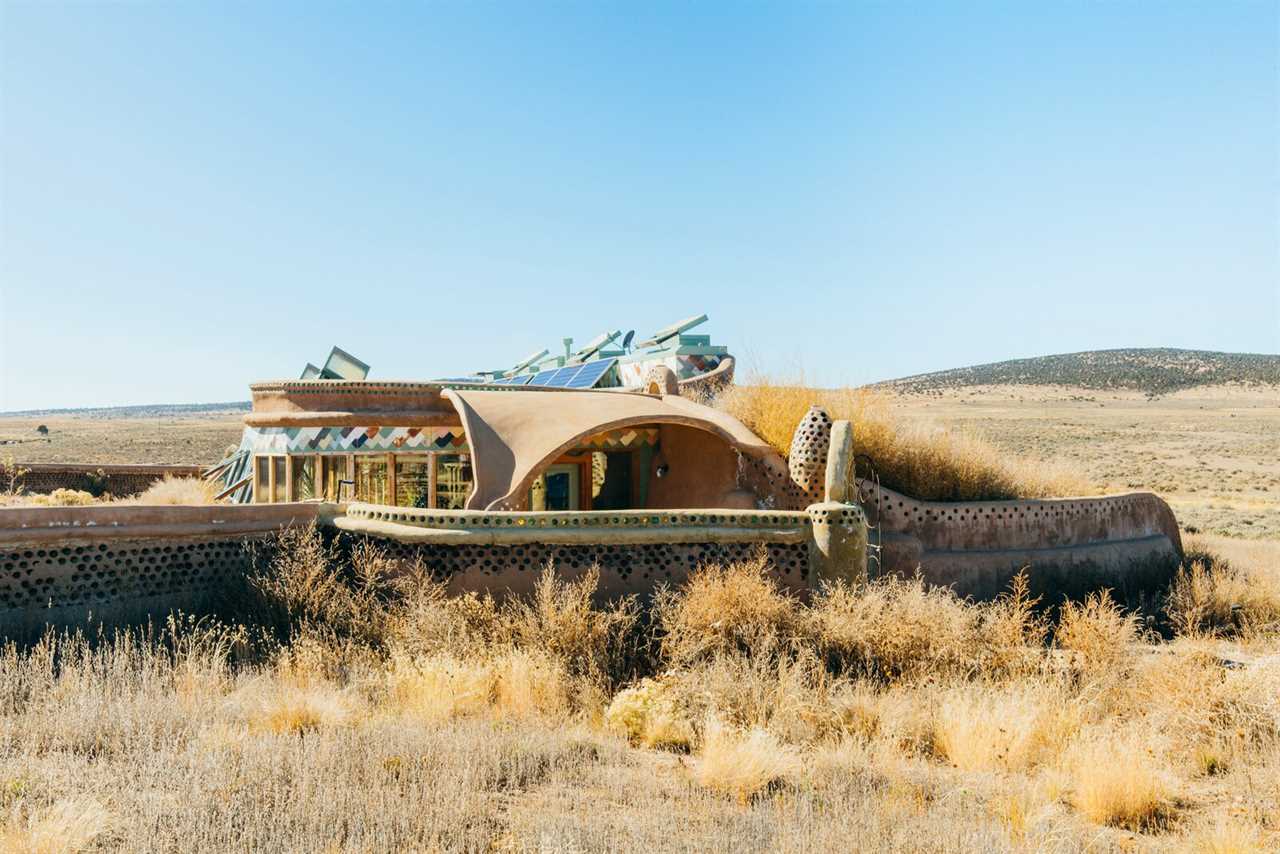
Highway 64 is a lonely, two-lane blacktop that runs east-west in northern New Mexico, spanning the Taos Plateau, part of the Rio Grande rift. The Sangre de Cristo Mountains rise in the east. The sky is vast. After the road crosses the Rio Grande Gorge Bridge heading west, the river, a slender green ribbon 650 feet below, bends north, and they come into view: curiosities half-hidden in hillsides, reminiscent of hobbit holes, Tatooine caves, or ancient cliff dwellings—earthships. These fanciful, rustic structures embody contradiction. They’re bona fide roadside attractions, cultural icons among the competitive real estate of Taos, a preeminent tourist town, yet they are also countercultural and highly individualistic, radical spaces that reimagine almost every part of contemporary life.
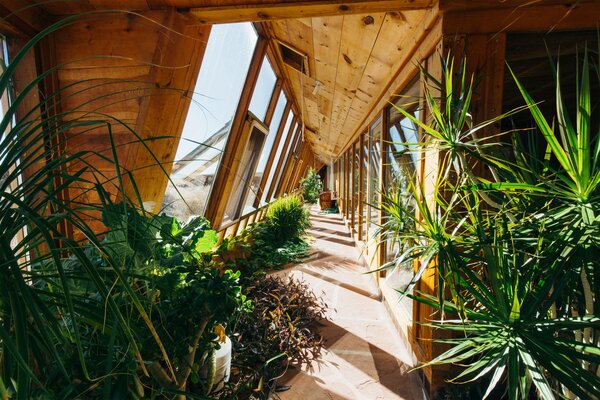
Earthships are self-contained and self-sufficient homes, bearing whimsical, curved adobe facades and tall, slanted windows. Straight lines and right angles are almost nonexistent because of the materials’ non-standardized nature, and at the right time of day, passersby are dazzled by a chimera of reflecting glass. Though all earthships follow a basic formula, no two are exactly alike. They’re off-grid, proudly iconoclastic.
Long before "sustainable design" was a buzz phrase, treading lightly was baked into earthship construction, from harvesting rainwater and snowmelt to processing blackwater and gray water to energy production via solar panels. Building and maintenance techniques are intentionally simple so that they can be taught and learned by laypeople. Recycled materials—trash—serve as building blocks. Dirt is sledgehammered into old tires, which are stacked to form the outer, load-bearing structure; glass bottles, suspended in grout and concrete, become translucent, honeycombed walls.
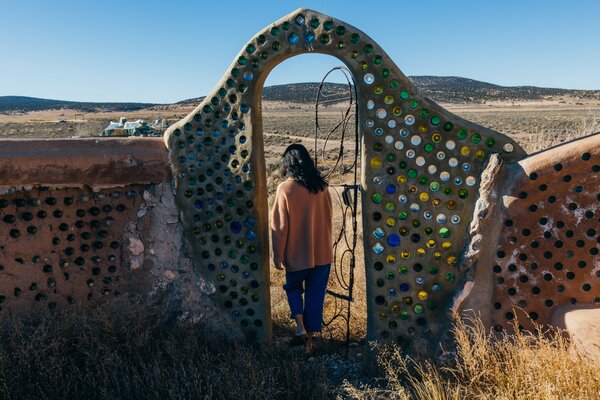
Dwellings are dug into the land for natural insulation. (Tubes run through a 30-foot earth berm behind the house; when it’s hot, opening a window or skylight at the front of the earthship creates a simple convection that draws air through the ground and into the rooms, quickly cooling the home.) In the northern hemisphere, earthships face south to take advantage of passive solar gain and rely on a greenhouse buffer zone in front for interior climate control and an auxiliary food source. Gardens can be wonderfully lush and host plants—like banana trees and blueberry bushes—that would otherwise struggle in an arid, high-desert environment.
The first earthships were made in the early 1970s by Michael Reynolds, an architect from the Midwest who started building houses out of cans in an unpopulated area on the mesa west of Taos—the city and the Pueblo, the latter of which is the oldest continually inhabited settlement in the United States. Reynolds, the subject of a 2007 documentary, Garbage Warrior, is a large and polarizing figure in and outside the community. He clashed with county officials over land use and permitting in the 1990s, and last year, a former student and staffer at his educational apparatus, Earthship Biotecture, accused Reynolds of sexual assault in a series of blogs and Instagram posts. (Reynolds has denied the accusations.)
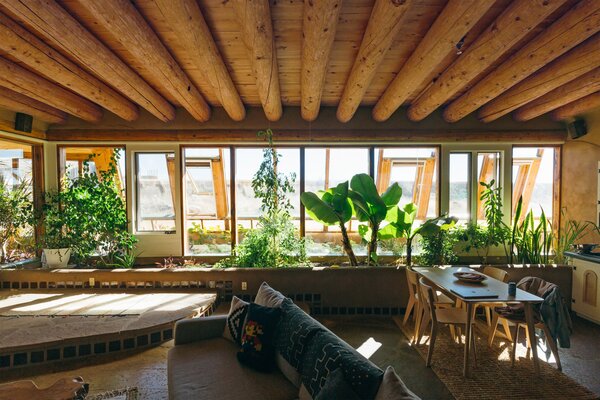
See the full story on Dwell.com: A New Generation of Earthship Owners Looks For Climate Solutions in the Past
Related stories:
- In Washington, D.C., a Back Alley Becomes a Sustainable Haven
- An Artful Restoration Returns a Louisville Home to Its Midcentury Roots
- This 1960s Home’s Painstaking Renovation Is a Love Letter to Midcentury Design
Read More
By: Adele Oliveira
Title: A New Generation of Earthship Owners Looks For Climate Solutions in the Past
Sourced From: www.dwell.com/article/new-generation-earthship-owners-taos-new-mexico-climate-change-0c7dc09d
Published Date: Sun, 08 Jan 2023 02:51:06 GMT
.png)


